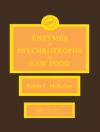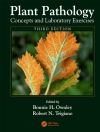16 revealing stories about the human brain
Ever wondered how Scandinavians cope with 24-hour darkness, why we feel pain – or whether smartphones really make children stupid?
Have you heard about the US army's research into supercharging minds?
You need some Brainology. Written for Wellcome, the health charity, these stories follow doctors as they solve the puzzle of our emotions, nerves and behaviour.
Discover fascinating and intriguing stories from the world of science.
Contents
– Ouch! The science of pain – John Walsh
– Why doctors are reclaiming LSD and ecstasy – Sam Wong
– Inside the mind of an interpreter – Geoff Watts
– How should we deal with dark winters? – Linda Geddes
– Smartphones won’t* make your kids dumb (*Probably) – Olivia Solon
– You can train your mind into ‘receiving’ medicine – Jo Marchant
– Charting the phenomenon of deep grief – Andrea Volpe
– The mirror cure for phantom limb pain – Srinath Perur
– Can you think yourself into a different person? – Will Storr
– How to survive a troubled childhood – Lucy Maddox
– What tail-chasing dogs reveal about humans – Shayla Love
– A central nervous solution to arthritis – Gaia Vince
– Could virtual reality headsets relieve pain? – Jo Marchant
– What it means to be homesick in the 21st Century – John Osborne
– Lighting up brain tumours with Project Violet – Alex O'Brien
– The US military plan to supercharge brains – Emma Young
EXTRACT
Ouch! The science of pain
John Walsh
One night in May, my wife sat up in bed and said, ‘I’ve got this awful pain just here.’ She prodded her abdomen and made a face. ‘It feels like something’s really wrong.’ Woozily noting that it was 2am, I asked what kind of pain it was. ‘Like something’s biting into me and won’t stop, ‘ she said.
‘Hold on, ‘ I said blearily, ‘help is at hand.’ I brought her a couple of ibuprofen with some water, which she downed, clutching my hand and waiting for the ache to subside.
An hour later, she was sitting up in bed again, in real distress. ‘It’s worse now, ‘ she said, ‘really nasty. Can you phone thedoctor?’ Miraculously, the family doctor answered the phone at 3am, listened to her recital of symptoms and concluded, ‘It might be your appendix. Have you had yours taken out?’ No, she hadn’t. ‘It could be appendicitis, ‘ he surmised, ‘but if it was dangerous you’d be in much worse pain than you’re in. Go to the hospital in the morning, but for now, take some paracetamol and try to sleep.’
Barely half an hour later, the balloon went up. She was awakened for the third time, but now with a pain so savage and uncontainable it made her howl like a tortured witch face down on a bonfire. The time for murmured assurances and spousal procrastination was over. I rang a local minicab, struggled into my clothes, bundled her into a dressing gown, and we sped to St Mary’s Paddington at just before 4am.
The flurry of action made the pain subside, if only through distraction, and we sat for hours while doctors brought forms to be filled, took her blood pressure and ran tests. A registrar poked a needle into my wife’s wrist and said, ‘Does that hurt? Does that? How about that?’ before concluding: ‘Impressive. You have a very high pain threshold.’
The pain was from pancreatitis, brought on by rogue gallstones that had escaped from her gall bladder and made their way, like fleeing convicts, to a refuge in her pancreas, causing agony. She was given a course of antibiotics and, a month later, had an operation to remove her gall bladder.
‘It’s keyhole surgery, ‘ said the surgeon breezily, ‘so you’ll be back to normal very soon. Some people feel well enough to take the bus home after the operation.’ His optimism was misplaced. My lovely wife, she of the admirably high pain threshold, had to stay overnight, and came home the following day filled with painkillers; when they wore off, she writhed with suffering.
Tabla de materias
INTRODUCTION. All of the stories in this book were first published by Mosaic (mosaicscience.com), created by Wellcome, a global charitable foundation dedicated to improving human health. They are republished here under a Creative Commons licence. Some edits have been made, including to the headlines
1. OOUCH! THE SCIENCE OF PAIN. There seemed to be a chasm of understanding in human discussions of pain. Let's find out how the medical profession apprehends pain – the language it uses for something that’s invisible, that can’t be measured save for asking for a sufferer’s subjective description
2. WHY DOCTORS ARE RECLAIMING LSD AND ECSTASY. The early LSD researchers had no way to look at what it was doing inside the brain. Now we have brain scans. Robin Carhart-Harris has carried out such studies with psilocybin, LSD and MDMA. He says there are two basic principles of how psychedelics work
3. INSIDE THE MIND OF AN INTERPRETER. So much goes on in an interpreter’s brain that it’s hard even to know where to start. Recently, however, a handful of enthusiasts have taken up the challenge, and one region of the brain – the caudate nucleus – has already caught their attention
4. HOW SHOULD WE DEAL WITH DARK WINTERS? For most, it's a mild malaise, winter blues. For a few seasonal affective disorder (SAD) is a form of depression. Now the town of Rjukan in southern Norway has installed giant mirrors to make the most of the winter sun. Do they cheer up the inhabitants?
5. SMARTPHONES WON'T* MAKE YOUR KIDS DUMB (*PROBABLY). The concern among some experts is that these devices, if used in particular ways, could be changing children’s brains for the worse – potentially affecting their attention, motor control, language skills and eyesight, especially in under-fives
6. YOU CAN TRAIN YOUR BODY INTO 'RECEIVING' MEDICINE. A quiet revolution is taking place in immunology. Lowering drug doses could minimise harmful side effects and save billions in health costs. How? By teaching the body how to respond to a medicine, so it can trigger the same change on its own
7. CHARTING THE PHENOMENON OF DEEP GRIEF. 'Complicated grief' affects 10-20% of people after a spouse or romantic partner dies, or when the death of a loved one is sudden or violent. It is even more common among parents who have lost a child. It is very debilitating and treatable
8. THE MIRROR CURE FOR PHANTOM LIMB PAIN. An American, Stephen Sumner, is helping Cambodian amputees, who have lost a limb due to landmines, to stop suffering debilitating pain and anxiety – with a usual and highly successful technique. He cycles around villages and hospitals looking for amputees
9. CAN YOU THINK YOURSELF INTO A DIFFERENT PERSON? Divorced and with another break-up, Debbie Hampton took an overdose and damaged her brain: encephalopathy. Then she tried a new treatment called neurofeedback. Then she read The Brain That Changes Itself. Now she runs thebestbrainpossible.com
10. HOW TO SURVIVE A TROUBLED CHILDHOOD. In Hawaii, researchers into trauma found two-thirds of 'high-risk' children developed significant problems. But totally unexpectedly, one-third didn’t. They became competent, confident and caring adults. Why?
11. WHAT TAIL-CHASING DOGS REVEAL ABOUT HUMANS. Sputnik has canine compulsive disorder (CCD) and is at Tufts for a checkup with Nicholas Dodman, a veterinarian who has been studying CCD for over two decades. When he started, he realised he had a potentially ideal animal study model for human OCD
12. A CENTRAL NERVOUS SOLUTION TO ARTHRITIS. Operating far below the level of our conscious minds, the vagus nerve is vital for keeping our bodies healthy. It is an essential part of the parasympathetic nervous system, which is responsible for calming organs after the adrenaline response to danger
13.
Sobre el autor
Top science writers report for Mosaic Science, a project founded by the health charity Wellcome to promote high-quality science writing.
Mosaic has published dozens of stories exploring the science people care about. Canbury Press has curated these long-form stories into two books, Bodyology: The Curious Science of Our Bodies (ISBN 9780995497863) and Brainology: The Curious Science of Our Minds (ISBN 9781912454006).
The leading authors who contributed to Brainology are: John Walsh, Sam Wong, Geoff Watts, Linda Geddes, Olivia Solon, Jo Marchant, Andrea Volpe, Srinath Perur, Will Storr, Lucy Maddox, Shayla Love, Gaia Vince, Jo Marchant, John Osborne, Alex O'Brien, Emma Young












